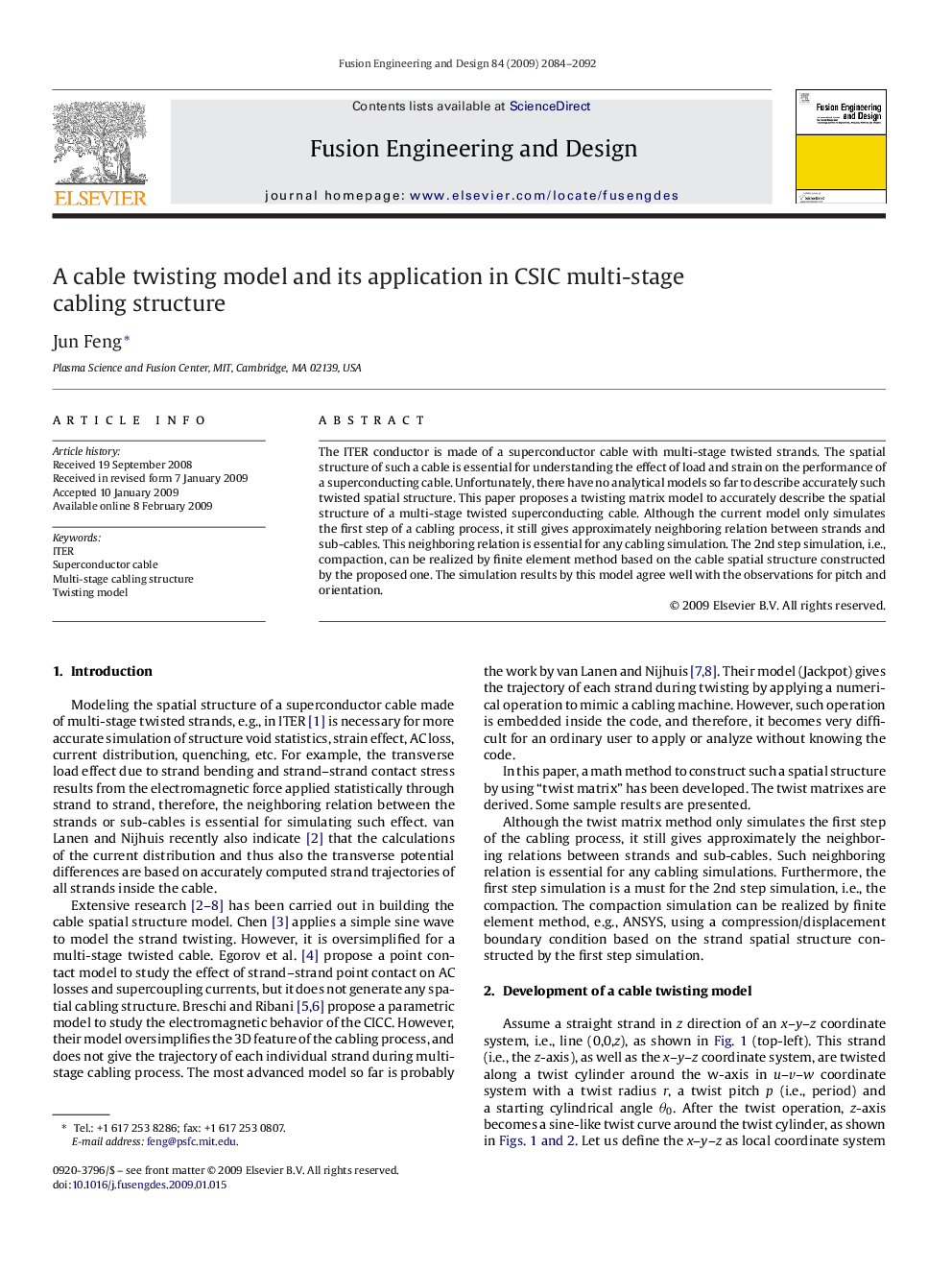| Article ID | Journal | Published Year | Pages | File Type |
|---|---|---|---|---|
| 272819 | Fusion Engineering and Design | 2009 | 9 Pages |
The ITER conductor is made of a superconductor cable with multi-stage twisted strands. The spatial structure of such a cable is essential for understanding the effect of load and strain on the performance of a superconducting cable. Unfortunately, there have no analytical models so far to describe accurately such twisted spatial structure. This paper proposes a twisting matrix model to accurately describe the spatial structure of a multi-stage twisted superconducting cable. Although the current model only simulates the first step of a cabling process, it still gives approximately neighboring relation between strands and sub-cables. This neighboring relation is essential for any cabling simulation. The 2nd step simulation, i.e., compaction, can be realized by finite element method based on the cable spatial structure constructed by the proposed one. The simulation results by this model agree well with the observations for pitch and orientation.
